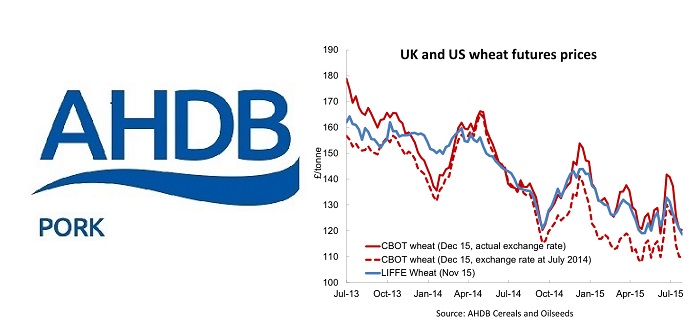Exchange rate fluctuations over the past year between sterling and the US dollar were arguably large enough to be the difference between the average UK pig producer breaking even and making a loss, according to AHDB Pork.
While noting that the precise impact of sterling/dollar changes on pig production costs will vary, the organisation’s second special report on currency issues concludes that UK costs could be as much as 10p/kg higher today than if the exchange rate had stayed at June 2014 levels.
“Although there is nothing the industry can do to influence exchange rates, being aware of their impact at least means there is an opportunity to take mitigating action,” said AHDB Pork, pointing out that the dollar was worth around 59p in June last year, rising to 67p by early spring 2015 before easing back to around 64p.
Such changes will have affected the UK price of animal feed ingredients and many other commodities, such as oil, which are all priced in dollars, resulting in a “wide variety of prices” being higher than if the exchange rate hadn’t moved.
“If the dollar was worth the same as a year ago, Chicago wheat would now be around £11 per tonne cheaper in sterling terms,” said AHDB Pork. “Therefore, UK feed wheat prices would likely have been lower by a similar amount. At times earlier in the year, the gap was as high as £18/tonne.”




